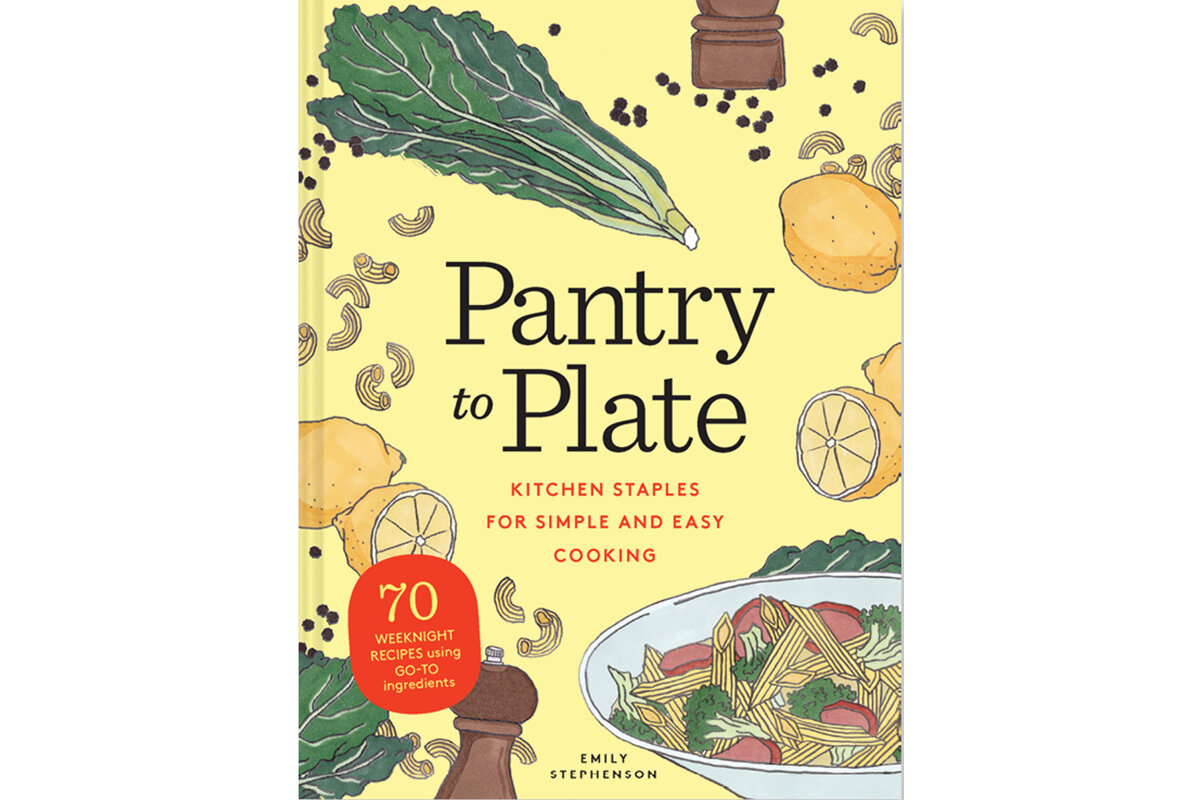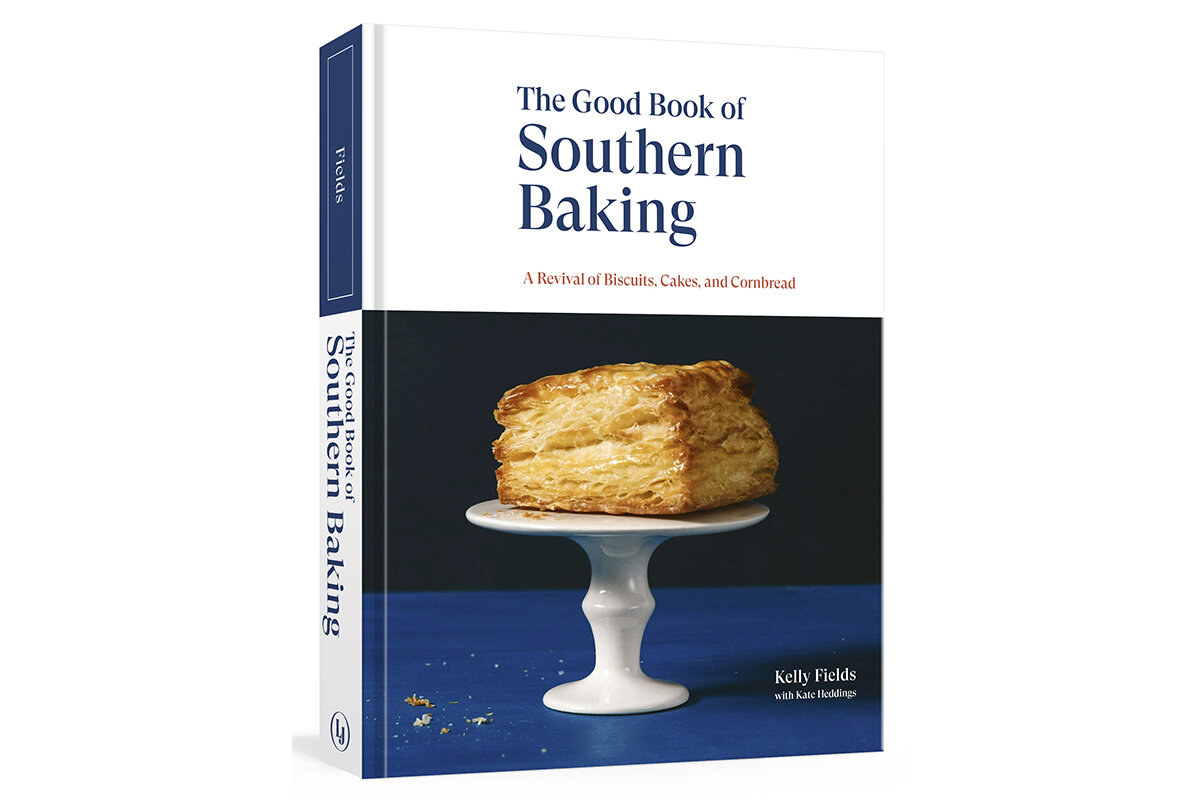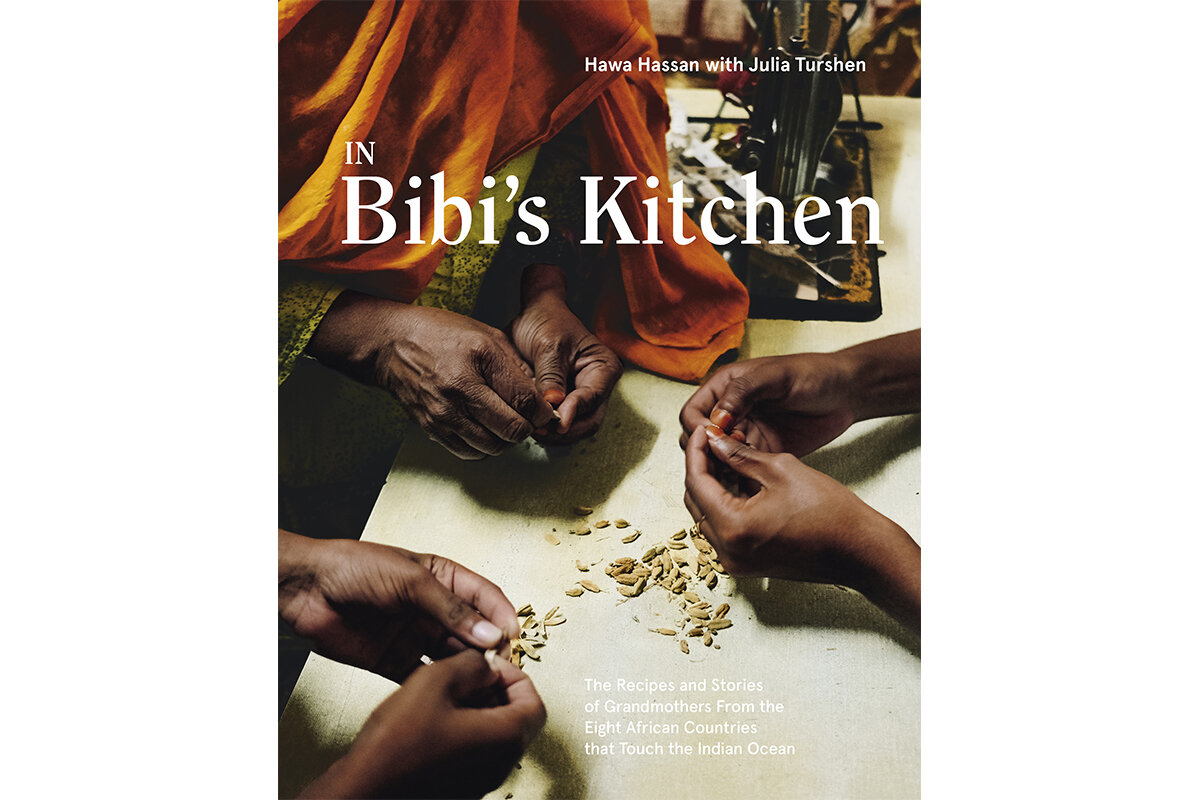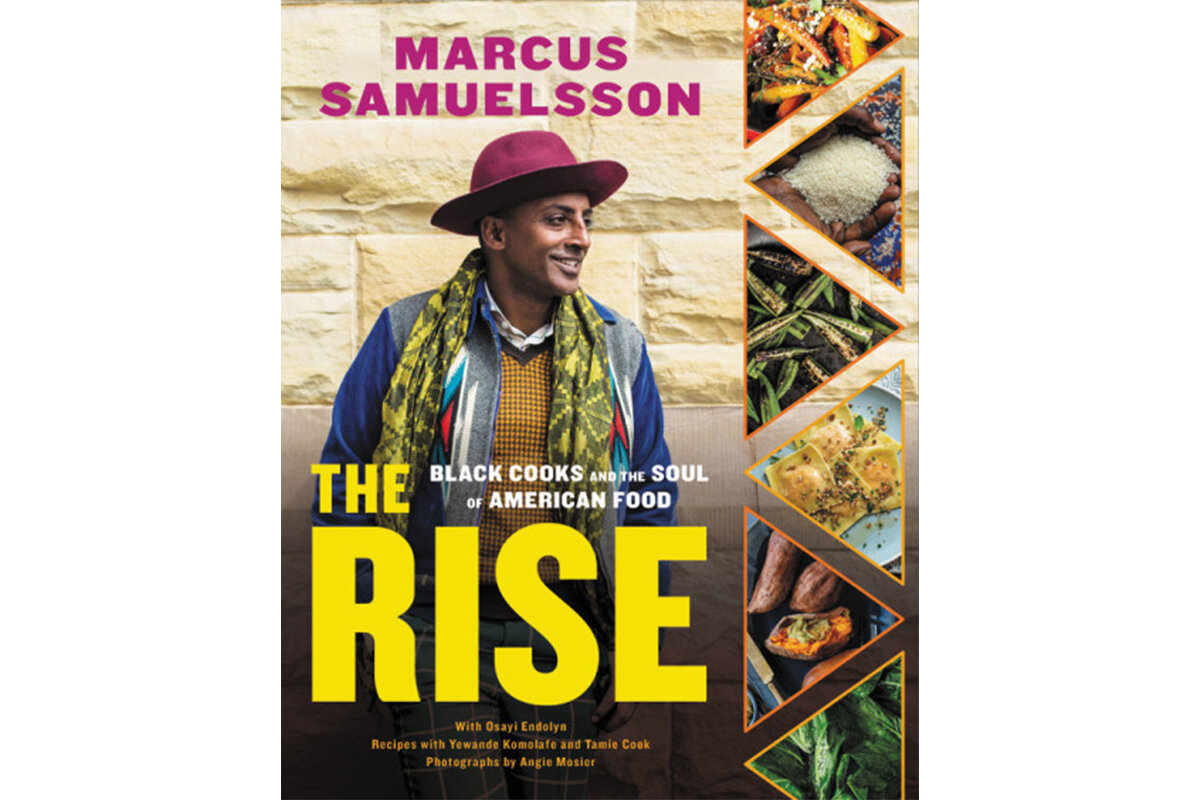Cooking at home? Try new takes on old favorites, or travel the world.
Loading...
It’s an open secret that many people would rather read a cookbook and order takeout than actually try new recipes. But lockdowns have provided more time to be patient and courageous in the kitchen. And with restaurants closing or serving meals only outdoors, more cupboard doors at home are swinging open these days. Social media feeds have been filled with images of “pandemic baking” – beautiful round loaves of sourdough, elaborately styled finger foods for grazing, and dinners for the family proudly made by teenagers. On cue, here comes a harvest of new cookbooks. There may be no sourdough recipes in this roundup, but there are plenty of invitations to experiment with flavors and transcend the confines of your kitchen.
Meals from pantry staples
Stocking the pantry seems simple enough, but what to make with all of those cans of chickpeas and boxes of pasta? Emily Stephenson offers a friendly guide in “Pantry to Plate: Kitchen Staples for Simple and Easy Cooking” with her recommended 50 staple ingredients and 70 recipes that mix and match only those ingredients. She suggests a pared-down protein list: eggs, bone-in chicken thighs, tuna, Italian sausage, and tofu. But there is plenty here to please the vegetarian cook, too.
Easy-to-follow recipes are grouped into chapters by meal type, including nine recipes that move eggs out of a scrambled rut. Stephenson also curates the recipes for meal planning on the go with categories such as quick weeknight meals, family-friendly, vegan, make ahead, and even dishes to impress dinner guests. If you are a beginner cook or just looking for fresh ideas, this collection will help take the stress out of mealtimes.
Irresistible baked goods
Advance your pandemic baking repertoire beyond yeasty loaves of bread with Kelly Fields and Kate Heddings’ “The Good Book of Southern Baking: A Revival of Biscuits, Cakes, and Cornbread.” Fields, a James Beard Award-winning pastry chef and owner of New Orleans bakery Willa Jean, reimagines quick breads, muffins, biscuits, cookies, and every kind of pie and tart in such mouthwatering ways you’ll be reaching for those baking pans before turning the last page.
Think chocolate chip cookies can’t be improved? Fields spent two years perfecting her Willa Jean recipe with three kinds of coarsely chopped chocolate and finished with sea salt. She breaks down old favorites like pumpkin pie and builds them back stronger: pumpkin pie with roasted white chocolate cream. See? You can’t resist. Roll up those sleeves and set the oven to preheat. Fields, with her humorous, no-nonsense talk about the best flours, flavors, and strategies will soon have you laughing and baking “ALL the pies.” As she says, baking should be simple and fun.
Cooking by color
Asha Gomez grew up along the beaches of southwest India and today navigates the bountiful displays of the international farmers markets in Atlanta. In “I Cook in Color: Bright Flavors From My Kitchen and Around the World,” by Gomez and Martha Hall Foose, the focus is on color in selecting ingredients and preparing meals. Gomez provides a wide palette of Southeast Asian cuisine, American South comfort food, and classic European dishes, plus lots of colorful vegetable dishes such as roasted butternut squash with tomato-ginger gravy or rainbow chard and kabocha pumpkin bean soup.
But what’s particularly tantalizing is the chapter on “Colorful Drinks to Sip and Savor,” which features concoctions like a soothing warm turmeric milk sweetened with honey and sprinkled with cardamom, and a fruity mint tea with peach ice cubes. Gomez has created a feast for the eyes and a how-to for the world traveler who likes to cook at home.
Kitchen-armchair traveling
Traveling offers the rewards of not only exciting new vistas, but also unfamiliar tastes and smells. What if you were ushered into the kitchen of a friendly grandma who wanted to teach you her favorite dishes? You would relax, absorb, and enjoy. That’s the experience of “In Bibi’s Kitchen: The Recipes and Stories of Grandmothers From the Eight African Countries That Touch the Indian Ocean,” by Hawa Hassan, a Somali chef, and Julia Turshen, a cookbook author. The two present 75 recipes and stories gathered from “bibis” from South Africa, Mozambique, Madagascar, Comoros, Tanzania, Kenya, Somalia, and Eritrea.
These are recipes from home cooks whose priority is to please their loved ones with good food. No fancy equipment is required, but you’ll learn about the widely used berbere spice mix (made up of dried chiles and warm spices) and how to make flatbreads in a skillet. And there are a few surprises, too, such as the appearance of Italian-influenced dishes like lasagna. The storytelling and gorgeous photos emanate hospitality and warmth, bringing these global neighbors one step closer.
Pan-African influences on Black cooking
Celebrity chef Marcus Samuelsson delivers his seventh cookbook hot off the press of current events: a pandemic that has strained the food industry and waves of Black Lives Matter protests. Samuelsson, an Ethiopian-born, Swedish-raised chef and American restaurant owner, strives to lift up the profiles of Black chefs in “The Rise: Black Cooks and the Soul of American Food” by sharing their recipes and stories. African and Caribbean culinary influences run throughout, as do classic Southern approaches.
Because these recipes are from chefs, prepare to up your game and get curious about spicy heat and flavors. (Fermented shrimp paste appears with surprising regularity.) Samuelsson also peppers in commentary from culinary historians, podcasters, and authors about the meaning of food in the Black community. The cumulative effect moves the conversation beyond the stereotype of “soul food” and into a creative, adaptable, and dynamic portfolio of emerging American recipes.











